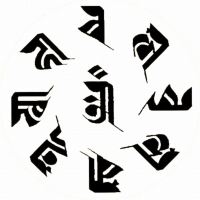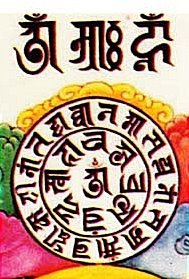Couple of Websites to Look at
These two websites may be of interest:
Mật Tông - Vietnamese Esoteric Buddhism
Some interesting Lantsa calligraphy here - most of the site is in Vietnamese but the visual stuff is good.
Siddham & Ranjana Keyboard
When this first launched I wasn't impressed. I don't like the CBETA Siddhaṃ font for start. But recently I re-visited the site and it seems to have come a long way. What really interested me was the input method for Ranjana and a decent Ranjana font. It's pretty good except for the spacing - it seems as though the letters are about 200% too wide so can't be grouped together to write words or mantras. (I used a character spacing of -20pts in Word and got a better, if slightly uneven, result). The Ranjana font isn't Unicode (I think conjuncts are displayed using individual characters rather than ligatures), and there are some gaps (dhīḥ and tāṃ can't be input for instance). However its a good start and the results are certainly better than my shakey calligraphy!
Mật Tông - Vietnamese Esoteric Buddhism
Some interesting Lantsa calligraphy here - most of the site is in Vietnamese but the visual stuff is good.
Siddham & Ranjana Keyboard
When this first launched I wasn't impressed. I don't like the CBETA Siddhaṃ font for start. But recently I re-visited the site and it seems to have come a long way. What really interested me was the input method for Ranjana and a decent Ranjana font. It's pretty good except for the spacing - it seems as though the letters are about 200% too wide so can't be grouped together to write words or mantras. (I used a character spacing of -20pts in Word and got a better, if slightly uneven, result). The Ranjana font isn't Unicode (I think conjuncts are displayed using individual characters rather than ligatures), and there are some gaps (dhīḥ and tāṃ can't be input for instance). However its a good start and the results are certainly better than my shakey calligraphy!
Labels: Lantsa, recommended






